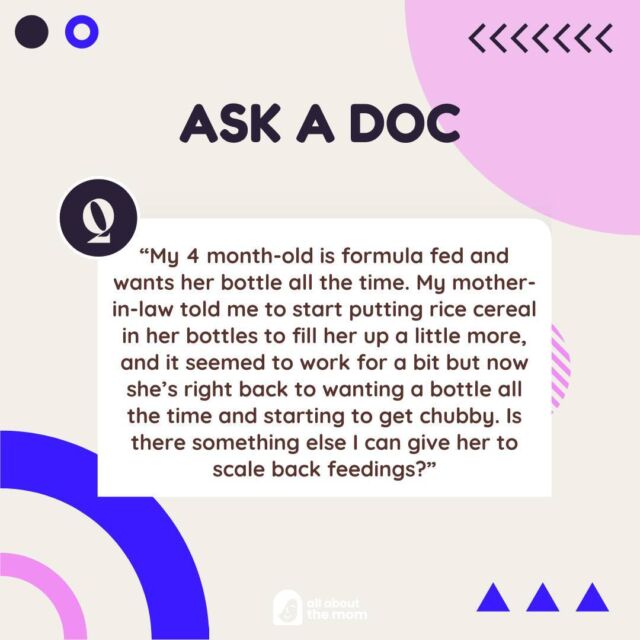Exhaustion. No really, literal exhaustion.
I speak these words to moms, but many moms simply do not fully understand the magnitude; not if they live in the realm of raising a child who falls within average physical and mental development. As the mom of a special needs child, every single day is endless fatigue. Fellow Special Needs moms understand the degree of strain I impart. My purpose is to share this struggle with you, walk together, networking in order to support each other supporting our kids.
The loss of energy I am conveying is despite the previous thousands of kids who have passed through the doors of my various classrooms… Elementary, Special Needs, Middle School, English for Speakers of Other Languages, High School, Brick & Mortar, Virtual… Twenty five years of experience as a Highly Effective Teacher, but none are the same as your own kid, at home, with special needs. Having completed my Master’s degree in Brain Research exactly five years prior to her birth, I was armed with unique insight and perspectives on the body-brain connection, in ways that many teachers now understand as growth mindset teaching as learning trends evolve.
Let me start at our beginning.
My husband was taking classes and volunteering at a hospital to finish requirements prior to starting medical school. I was back to work full time teaching, at home online, while simultaneously playing the part of a full time mom and domestic CEO. Harper was never happy in her infant body. It seemed as if she was trying to tell us that she wanted out with her constant shrieking. She screamed and cried endlessly, never napped, refused to fall asleep, and if she did finally doze off, it was only 1-3 hours until the cycle resumed. Considering we are older parents; I was 3 weeks shy of 42 years when she was born, we were absolutely drained.
I was at a loss. At six months of age, our pediatrician suggested we try a visit from a pricey sleep specialist. She confirmed, during her 2 hour home visit, that we were taking all the right steps to create a bedtime routine for baby sleep success. “It will only be a matter of days until she is sleeping through the night, stay strong,” she guaranteed. Hmph…followed by my eye roll and doubt. Needless to say, we put the same dollar spread on a swing with a five point harness a week later so that we could borrow a 3 hour block of shut eye. That lasted for a few months. My next full night’s sleep occurred when she was 3 ½ years old. By then, I was one old, worn out mama.
By the time she was 12 months old, she was successfully using sign language to communicate her needs and desires.
I was able to pull from the numerous times I had learned to sign: a boyfriend’s niece, the bar backer, a college course, and most recently in my professional field as the lead in a classroom of seven students with Autism diagnosis. Her verbal language at this benchmark was limited to five sounds (not complete words) with meaning. I was alert to the unusual fact that her sounds were ending sounds, for example “gee” for “doggie,” “lon” in place of “Mulan,” and “fent” instead of “elephant”. My language acquisition training as an English for Speakers of Other Languages recognized that most language learners attempt to repeat the beginning sounds of a word first, such as “da” for “daddy” and “dog” for “doggie”.
During our 15 month well check, her verbal sounds with meaning had dropped to only three. She was already digressing. Given I had taught in the Autistic Unit, as it was referred to at the turn of the century, I knew that digression was never something to take lightly. Initiating early intervention offers a better outcome for a child to recover any losses and progress with less development delays in comparison to their average peers. When the doctor suggested it could be developmental, I replied with a firm, “No.” I wanted a language referral. Better to overreact now than to underreact and face more severe outcomes later. My experience in the Education field guided me to know to pursue options, more so than merely going along with the doctor’s wait-and-see attitude.
Since our pediatrician’s office was in a different city than we lived, and we were new to town after a recent move, I was uncertain about where to start, who to call, and what services were available. I did know that toddlers between the ages of three to five years are provided free services in the public school system through the Individuals with Disabilities Education Act (IDEA), later penned Every Student Succeeds Act, in December 2015. But Harper was only 15 months old. With no leads, I decided to start my journey where I was familiar and called the local public school office. They had the answers. I was directed to an agency titled Early Steps.
Early Steps came to our home for an evaluation, per the language referral.
Seeing the child in the home situation provided the most authentic observation and natural setting for an evaluation by the therapists. They brought the team! The Social Worker led the group, followed by the Speech Pathologist, Occupational Therapist, Behavioral Specialist, and Physical Therapist. Our living room was packed like sardines. A few of the therapists instantaneously engaged with Harper through floor play, allowing the Social Worker and I time to discuss concerns.
As we delved into inquiry, the team was quick to identify a number of our issues at home circled back to a single diagnosis, Sensory Processing Disorder (SPD). “Hindsight is 20/20,” they say. I had only encountered sensory issues with my students who were on the Autism Spectrum, but Harper was not Autistic. The realization that SPD can be its own diagnosis explained so many of her unique behaviors. She squirmed on the ground as if in an Army crawl, which we learned was her brain refusing to integrate her left leg movement with the rest of her body. Every night she screamed after her bath, once to the extent that she was breathless. If she had not started breathing during our call to the emergency nurse, we were at a loss of how to make it to the Emergency Department when her arching body would not conform into a car seat. Her inability to rest her brain and go to sleep, her adverse response to touching grass and sand, her herculean arm strength… the puzzle pieces were falling into place, so many minute details started to make sense in our world.
After a comfort level grew between the therapists and Harper, they moved into the official testing for evaluation purposes and baseline documentation.
We learned that at the age of only 15 months, Harper had the intellect of a 6 year old, or greater, but the next portion of the test included letters of the alphabet, of which she did not yet know. We knew she had many mature thoughts in her brain; she was seemingly anticipating a day in the near future when she would have a format to spill the beans!
This diagnosis confirmed my presumptions that Harper was in the Gifted range. She would appear as a smart child academically, but this high level of intelligence opens the door to a myriad of other challenges including social / emotional development. Misunderstanding social cues and nuances is a common characteristic of Gifted children. In addition, intelligence can increase a lack of Executive Functioning skills, which includes observing and identifying a problem, brainstorming a plan, executing an action, and adjusting the original idea. These skills can be taught and strategies can be gained, but they often need to be explicit, direct instruction with opportunities to practice in realistic situations. Yet in the public schools, Education Plans for Gifted students usually focus on Advanced Academics, or extra projects with more research. Creative outlets tend to be the core focus of Gifted instruction, despite the growing research that our brains have the ability for expansion and inclusion of social emotional learning (SEL), but I digress from the early years…
We initiated Language Therapy and Occupational therapy weekly.
As her walking became more stable, we noticed wobbles, balance concerns, and in toeing -especially when she picked up the pace to a light jog, thus Physical Therapy was started a few months later. One of the shocking realizations was that Harper refused to use her left hand/arm! She was also not able to cross her arms beyond her midline (imagine a line down the center of your body from head to between the legs, then cross right to left and vice versa). I am acutely aware, following teaching of Reading Instructional practices, that crossing the midline is a required step in brain development that allows a person to read. The cross factor allows for additional brain synapses to form across the mid brain from left to right and reverse. She graduated from Early Steps at three years old. After a few months, she was already digressing again, thus Early Steps shared a network they had learned from moms, ELKs of Florida. The ELKs provide children’s therapy services, for free to the family. Harper received OT from the ELKs, and dad, who was nearly a Pediatric Physical Therapist by this time, continued activities and challenges from his insight.
Multiple weekly appointments, practice, plus gymnastics to improve physical development (and expend some energy), along with working full time… did I mention I was really tired?
We were fortunate to be approached by a nursing student at a local restaurant, who became our Nanny. She “played” with Harper for a few hours three times a week while I completed essential work with no disruptions. This was the only time of the day that Harper was not with me or my husband (her dad). We truly feared that Harper’s disruptive and frustrating behaviors could cause a reaction that could either risk the caretaker’s future work or hurt Harper directly. Only one year later, we lost our lucky charm, as Nanny Jen moved onto full time nursing school. Thus, Harper started preschool at age 2 ½. But not until after we had toured numerous facilities, including visits for circle time, as she sat on my lap and refused profusely with intolerable screams if I should move away. Mind you, this resulted in a good deal of lost time at work for me and more tasks to complete in less time upon return to my laptop.
Randomly, on the way home one day, I noticed a preschool nearby. I snapped a picture of the phone number on their sign and called. They invited us to come to the playground for a meet and greet. Playground. Movement. Fresh Air. Harper was sold! Did I mention the playground?! Movement is Harper’s medicine. She requires constant regulation, whether it be body brushing, bouncing on the trampoline, running sprints with daddy, joint compressions, or deep pressure, the list goes on. These actions allow her muscles to find where she was in space. This is one of the eight senses, not five as we were misinformed in elementary school decades ago, Proprioception. We also integrate activities that feed the Vestibular sensory receptors with regulatory behaviors. This was fuel for her brain, joints, and nerves that begged for hard touch to feel “grounded.” On the preschool playground, she was “home sweet home.”
As she continued onto preschool 3 and 4, then onto Kindergarten, I shared with the teaching staff that Harper had SPD. We selected academic settings that specifically supported Harper’s needs so that disruptions were avoided in the classroom. A bonus for her Kindergarten teacher, Harper had started reading on her own after the Covid shut down in Spring of 2020 at the age of four. While the teacher greeted students at the door in the morning, Harper provided a read aloud to the incoming students on the carpet. So, there are some positive achievements too, layered briefly in between the constant challenges at home.
Each year the teachers stated that there were few apparent signs of SPD in the classroom.
Primarily she would request to use headphones when it was too loud. By first grade, she was permitted to take her tests in a quiet room, given that she was the only one who could read the test on her own and the teacher’s voice was a distraction. The separate setting offered her space to think, to solve, and then respond, showing her knowledge on topic instead of earning low scores due to an inability to focus on task without disruptions.
She participated in gymnastics and ballet classes starting at two, thus I shared the diagnosis given the physical needs and awareness of any limitations or adaptations if needed. They wrote off many of the SPD issues I shared as common behaviors of students her age. This irks me! Many SPD behaviors can be toddler-isms, but only when they occur in isolation. Yes, alone, one or two of the symptoms is a normal toddler tendency. But when I know the challenges we have faced at home and over time, on a daily basis for seven years (notwithstanding the strategies and charts and routines and therapies and…) along with a true diagnosis by multiple professionals in the field, it is not a mere developmental behavior that she will naturally outgrow.
Many times, in my teacher role, I reassured parents that it is common for students to behave differently at school in comparison to home. At home they are comfortable and safe. If I didn’t know this to be true as a teacher, I would definitely doubt it when I heard it as a parent! At home, our step charts for daily routines are now in words instead of pictures, but they still exist and are needed. None the less, we still have daily arguments. She refuses to release her urine. Despite walking the dogs every day, she fights putting on her shoes and walking out the door Every. Single. Night. Our eating options are limited for texture and heat. She cannot yet ride a bike, partially because of her inability to balance, but also her constant opposition. Oh yes, also part of the SPD spectrum is Opposition Defiance Disorder (ODD). When this was a new label years ago, and a student came into my classroom, my first thought was, “oh, you mean poor parenting?” Yeah, I’m feeling that blow where it hurts now! Now, I’m her target. I get the arguments and fights and disrespect more severely and more often than anyone else, because I am her safe spot to land, and release. But knowing I’m her comfort doesn’t make the daily fights any easier.
While she has had glowing reports in the classroom the last few years, her current teacher is starting to observe her “spacing off” in class.
ADD or ADHD is often a misdiagnosed sign of SPD in the classroom. Since we already know she has SPD, we don’t need to add another label. We need to provide strategies for her to focus or refocus. (While we have not needed medication support, it is an option that can be addressed should it become a need.) She needs movement to restart the body-brain connection for learning to happen in real time. I learned about her ‘drifting’ after I found out that Harper received a 31% F on a Science test. Given her level of intelligence, and after I caught my breath from surprise, anger, and frustration, it was clear to me that something had gone swimmingly wrong. I realized it was time to get real with the educational team about Harper’s Sensory Processing Needs. On the outside, from the surface, it looks like Harper rushed the test. But when you get the inside scoop from the child, she was OCD focused on the need to finish in order to match up with her friend, so they could be in the same center for Fun Friday activities. Yes, Obsessive Compulsive Disorder is yet another fallout behavior often misdiagnosed for students. Harper unexpectedly, but timely, showcased this behavior as I was presenting it to her teacher. She re-velcroed her shoes, repeatedly and constantly, during a two minute span while we were talking. When the brain of an SPD child is focused on one thing, they are not able to refocus on another task without support or a well-integrated strategy. There was absolutely no possibility that Harper could focus attention on the aforementioned test when her brain was elsewhere, and no one was able to identify the issue in order to implement a strategy to divert attention. Thus, I called for a parent conference, requested all teachers, past and present, and made certain that dad was available too, given his professional input as a Pediatric Physical Therapist who works day in and day out with regulated and dysregulated behaviors in his athletes.
We, the SPD moms, are sprinkled intermittently among each other.
Some of us know why we are exhausted. We have a diagnosis. Some of you have a gut feeling that your child is different than the others, in a way that is hard to explain, because it’s the millions of little things, every day, that are challenging. Every day. Every single day she fights me to go to the bathroom. Every day I either give her health implications and reasons as to why she must empty her bladder, or I ask her to tell me why it is important for her own health. Every single day she doesn’t want to leave the house. Whether it is school, the park, riding her bike, errands…. She struggles with transitioning in all situations, even today, after seven years of living with this. She argues every night about walking the dogs following dinner. It’s a routine. Once she gets into the activities she seems happy. But the transitions are hard. Every. Single. Day. I’m exhausted explaining “Why” Every. Single. Day. Mind you, I use my open ended questioning strategies to help her think and avoid yes/no response questions, because that is what I’m accustomed to practicing with my students. So I know she knows how to think. I know that I have built that strategy into her daily life. None the less, I am on repeat mode saying, “stop and think” Every. Single. Day. It is never ending. And it is exhausting.
When we find each other in the unlikeliest of places, chatting in a grocery line or watching the kids play at the park, the relief of finding a fellow mom takes the weight off of our shoulders for a flash of time. A shared burden. Instant triumph and kinship, knowing that we’re not alone. Another mom understands my situation, it is similar to her’s, and she is not judging my ‘lack of’ parenting skills. And we sit together, with reprieve and momentarily sharing our exhaustion.
This is not the whole story, but it includes the highlights that come to mind today. Tomorrow I’ll remember an event that would have matched another mom’s situation. We are all so unique in this game called life. I’m grateful to have the background knowledge from being a teacher of students with special needs. Otherwise, I would be lost, pulling my hair out at day’s end. I’m exhausted, but I’m also a realist. One day at a time… we can do it momma!
~Lynn
















